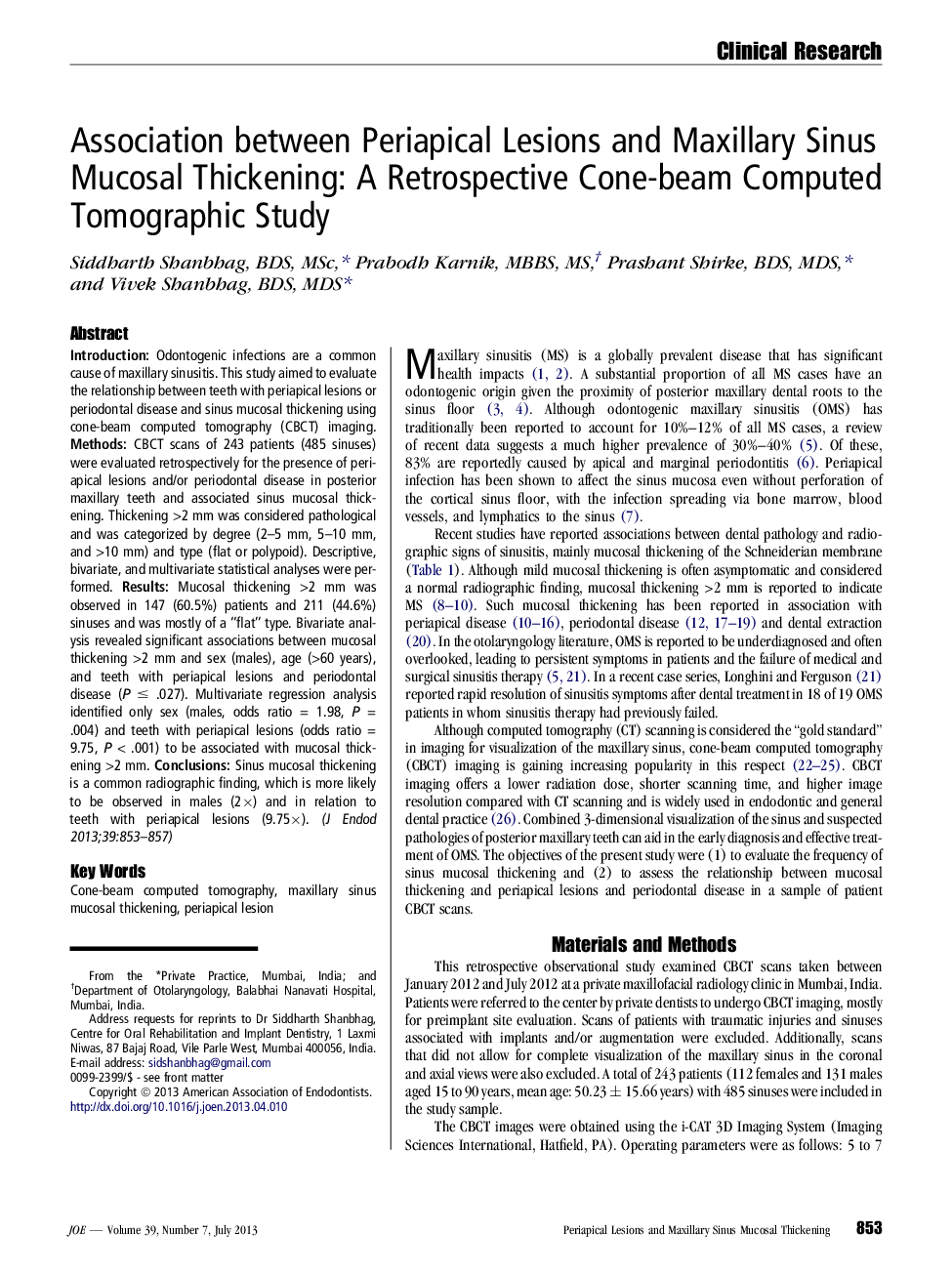| Article ID | Journal | Published Year | Pages | File Type |
|---|---|---|---|---|
| 3150379 | Journal of Endodontics | 2013 | 5 Pages |
IntroductionOdontogenic infections are a common cause of maxillary sinusitis. This study aimed to evaluate the relationship between teeth with periapical lesions or periodontal disease and sinus mucosal thickening using cone-beam computed tomography (CBCT) imaging.MethodsCBCT scans of 243 patients (485 sinuses) were evaluated retrospectively for the presence of periapical lesions and/or periodontal disease in posterior maxillary teeth and associated sinus mucosal thickening. Thickening >2 mm was considered pathological and was categorized by degree (2–5 mm, 5–10 mm, and >10 mm) and type (flat or polypoid). Descriptive, bivariate, and multivariate statistical analyses were performed.ResultsMucosal thickening >2 mm was observed in 147 (60.5%) patients and 211 (44.6%) sinuses and was mostly of a “flat” type. Bivariate analysis revealed significant associations between mucosal thickening >2 mm and sex (males), age (>60 years), and teeth with periapical lesions and periodontal disease (P ≤ .027). Multivariate regression analysis identified only sex (males, odds ratio = 1.98, P = .004) and teeth with periapical lesions (odds ratio = 9.75, P < .001) to be associated with mucosal thickening >2 mm.ConclusionsSinus mucosal thickening is a common radiographic finding, which is more likely to be observed in males (2×) and in relation to teeth with periapical lesions (9.75×).
